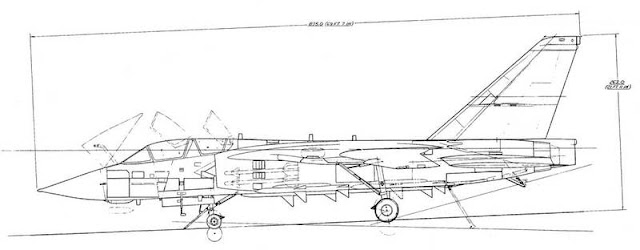The V-507 Mock Up is Born
As was common practice in the industry since the 1930's, an Operations Specification, Request for Proposal or other documents were submitted to industry and brochures, reports were generated on the company's proposal. The proposals were evaluated and the top one or top two were selected to go further into the development stage with more detailed engineering being accomplished and a mock up built.The V-507 is was selected to continue on to the mock up phase.
The visitor to the V-507 mock up was treated to a series of informational panels along the way to the actual mock up. These panels helped to tell the story of the V-507 and why it was the right choice for the US Navy. Although incomplete, the photos do give signifigant insight into the development of the V-507.
A configuration display was presented with models showing the evolution from the F8U-3 to the V-484, V-505 and eventually the final V-507 configuration.
The threat that needed to be countered was illustrated. This showed that the engineering team understood the challenges facing the new design.
The technical alliance of Vought, Dassault, and Lockheed shown with the contributions of each highlighted.
Vought
- Navy Fighter Design
- Movable Wing Technology
Dassault
- Inlet Design
- TF-30 Operational Experience (Mirage F2, Mirage G)
- Swing Wing Experience
Lockheed
- Air Force Fighter Design
- Titanium Manufacturing Technology
To further illustrate the technical alliance a display of the inlet design was presented along with the metals used in the manufacture of the aircraft along with what components were using titanium.
Finally in the photos that were uncovered for this post are the spotting diagrams. As this was an aircraft for the US Navy the ability to move and store the design aboard ship is critical to the success.
The display shows different spotting arrangements and compares the V-507 to the F-4 that was the current shipboard fighter. It also shows the V-507 in the hangar with the various other types then on board ship.
That concludes this walk through of the V-507 information boards. As can bee seen in the photos there are other panels and places where the confidential information has been covered over. These were the only photos uncovered thus far of this display, which is amazing that they still exist!
In the next installment of this series the mock up will be revealed.























